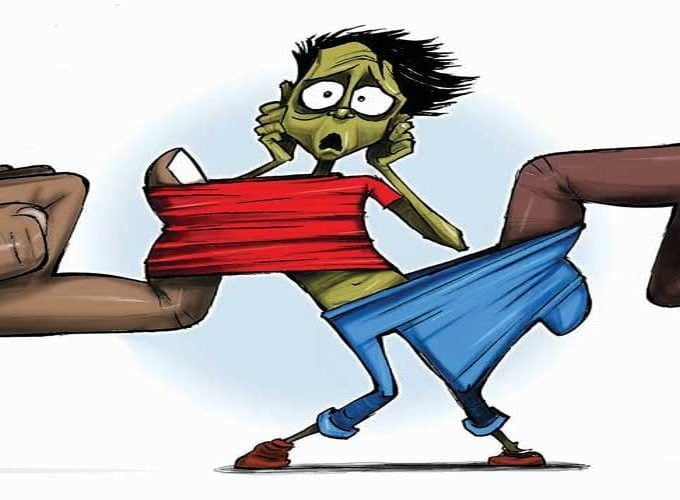Abstract: Cultural violence refers to the social norms, practices, and ideologies that promote and sustain violence and oppression towards specific groups or individuals. It can take various forms, including structural violence, symbolic violence, and direct violence. This blog post aims to provide a comprehensive overview of cultural violence by examining its various forms, effects, and solutions. The article is organized into ten main headings, each with three subheadings, covering the different aspects of cultural violence.
Cultural violence
Cultural violence is a pervasive and insidious form of violence that affects millions of people around the world. It is often overlooked or ignored, as it operates at a subconscious level, perpetuated by social norms, practices, and beliefs that are deeply ingrained in our societies. Cultural violence can take many different forms, including structural violence, symbolic violence, and direct violence, and can be experienced by individuals and groups who are marginalized or discriminated against on the basis of their gender, race, ethnicity, religion, sexuality, or any other aspect of their identity.
Forms of Cultural Violence
Structural Violence
- Structural violence refers to the systematic ways in which social structures and institutions create and maintain unequal power relations, resulting in the marginalization and oppression of certain groups of people.
- Examples of structural violence include unequal access to education, healthcare, and job opportunities, as well as the lack of political representation and participation.
- Structural violence can be perpetuated by government policies, economic systems, and social norms that reinforce discrimination and inequality.
Symbolic Violence
- Symbolic violence refers to the ways in which language, symbols, and cultural practices are used to legitimize and normalize unequal power relations and oppression.
- Examples of symbolic violence include derogatory language, stereotypes, and cultural practices that reinforce gender, racial, or ethnic hierarchies.
- Symbolic violence can be perpetuated by the media, education, and cultural institutions that promote dominant cultural values and perspectives.
Direct Violence
- Direct violence refers to physical, psychological, or emotional harm inflicted on individuals or groups through the use of force or coercion.
- Examples of direct violence include hate crimes, domestic violence, and police brutality.
- Direct violence can be perpetuated by individuals or groups who seek to maintain their power and control over others.
Effects of Cultural Violence
Physical and Mental Health Effects
- Cultural violence can have severe physical and mental health effects on individuals who are subjected to it.
- Physical health effects can include injury, illness, and disability, while mental health effects can include trauma, anxiety, and depression.
- Cultural violence can also lead to the development of negative health behaviors, such as substance abuse and self-harm.
Social and Economic Effects
- Cultural violence can have significant social and economic effects on individuals and communities.
- Social effects can include isolation, exclusion, and discrimination, while economic effects can include poverty, unemployment, and limited access to resources.
- Cultural violence can also perpetuate intergenerational cycles of poverty and marginalization.
Societal Effects
- Cultural violence can have profound effects on the wider society, including the erosion of trust, social cohesion, and democratic values.
- Societal effects can include increased social conflict, political instability, and the breakdown of social institutions.
- Cultural violence can also lead to the perpetuation of social inequality and the denial of basic human rights for certain groups of people.
Causes of Cultural Violence
Historical and Structural Factors
- Historical and structural factors, such as colonization, slavery, and patriarchy, can contribute to the development and perpetuation of cultural violence.
- These factors create power imbalances and unequal distribution of resources, which can lead to the marginalization and oppression of certain groups of people.
- The legacy of historical and structural factors can continue to impact contemporary society through social norms, practices, and ideologies.
Cultural and Religious Beliefs
- Cultural and religious beliefs can also contribute to the development and perpetuation of cultural violence.
- Certain cultural and religious practices can reinforce discriminatory attitudes and behaviors towards specific groups of people.
- These beliefs can be deeply ingrained in social norms and practices, making it challenging to challenge and change them.
Political and Economic Factors
- Political and economic factors, such as authoritarianism, neoliberalism, and globalization, can contribute to the development and perpetuation of cultural violence.
- These factors can create conditions of inequality and injustice, which can lead to the marginalization and oppression of certain groups of people.
- Political and economic factors can also contribute to the perpetuation of cultural violence by reinforcing dominant cultural values and perspectives.
Examples of Cultural Violence
Gender-Based Violence
- Gender-based violence is a form of cultural violence that is experienced by women and gender groups.
- Examples of gender-based violence include sexual assault, domestic violence, and forced marriage.
- Gender-based violence is perpetuated by social norms and practices that reinforce patriarchal values and gender hierarchies.
Racism and Xenophobia
- Racism and xenophobia are forms of cultural violence that target individuals and groups based on their race or ethnicity.
- Examples of racism and xenophobia include hate crimes, discrimination, and racial profiling.
- Racism and xenophobia are perpetuated by social norms and practices that reinforce white supremacy and racial hierarchies.
LGBTQ+ Discrimination
- Discrimination against LGBTQ+ individuals is a form of cultural violence that targets individuals based on their sexual orientation or gender identity.
- Examples of LGBTQ+ discrimination include hate crimes, employment discrimination, and denial of basic human rights.
- LGBTQ+ discrimination is perpetuated by social norms and practices that reinforce heteronormativity and cisnormativity.
Solutions to Cultural Violence
Education and Awareness
- Education and awareness campaigns can help to raise awareness about cultural violence and its impact on individuals and communities.
- Educational programs can teach individuals about the history and effects of cultural violence and provide strategies for challenging and dismantling oppressive structures.
- Awareness campaigns can also help to challenge cultural norms and beliefs that perpetuate violence and promote social justice and equality.
Policy and Legal Reform
- Policy and legal reform can help to address the root causes of cultural violence and provide protections for marginalized groups.
- Examples of policy and legal reform include anti-discrimination laws, affirmative action policies, and gender and sexuality education programs.
- Policy and legal reform can also help to hold individuals and institutions accountable for perpetuating cultural violence.
Grassroots Organizing and Activism
- Grassroots organizing and activism can empower individuals and communities to challenge cultural violence and create social change.
- Examples of grassroots organizing and activism include protests, community organizing, and mutual aid networks.
- Grassroots organizing and activism can also help to amplify the voices of marginalized groups and create networks of support and solidarity.
Conclusion
Cultural violence is a complex and multifaceted phenomenon that can have profound impacts on individuals and communities. It is perpetuated by social norms and practices that reinforce oppressive structures and deny basic human rights to certain groups of people. However, there are solutions to cultural violence, including education and awareness, policy and legal reform, and grassroots organizing and activism. By working together, we can challenge and dismantle cultural violence and create a more just and equitable society.
Disclaimer
Before concluding, it is important to note that the opinions and views expressed in this blog post are those of the author and do not necessarily reflect the views of any organization or institution the author may be affiliated with. This blog post is intended for informational purposes only and is not a substitute for professional advice. It is also important to recognize that cultural violence affects individuals and communities in different ways, and the experiences of marginalized groups should always be centered and prioritized in discussions about cultural violence and its impacts.
Last worded from Author
As we navigate a world that is still plagued by cultural violence, it is important to remember that change is possible. We must all do our part in challenging oppressive norms and structures, and work towards creating a more just and equitable society. It will take education, policy reform, and grassroots activism to achieve this goal, but the reward will be a world where all individuals and communities can thrive and live free from violence and oppression.
FAQs
Cultural violence refers to social norms, beliefs, and practices that perpetuate and normalize oppression, discrimination, and violence against certain groups of people. This can include gender-based violence, racism, and discrimination against LGBTQ+ individuals, among other forms of oppression.
Unlike physical violence, which is visible and tangible, cultural violence is often more subtle and insidious. It can be perpetuated through language, social norms, and institutions, making it more difficult to identify and address.
Cultural violence can affect individuals and communities from all backgrounds, but it often disproportionately impacts marginalized groups, such as women, people of color, and LGBTQ+ individuals.
Examples of cultural violence can include victim-blaming in cases of sexual assault, stereotypes that perpetuate harmful beliefs about certain groups of people, and discriminatory policies and practices that limit the rights and opportunities of marginalized individuals and communities.
Challenging cultural violence requires a multi-faceted approach, including education and awareness, policy reform, and grassroots organizing and activism. It is important to center the experiences of marginalized groups and work towards creating a more just and equitable society.
While cultural violence may never be completely eradicated, it is possible to reduce its impact and prevalence through sustained efforts towards education, policy reform, and grassroots activism.
Individuals can help in the fight against cultural violence by educating themselves on the issue, challenging harmful social norms and stereotypes, supporting policies and organizations that work towards social justice, and advocating for the rights of marginalized groups.
Addressing cultural violence is essential for creating a more just and equitable society. It is a necessary step towards ending oppression, discrimination, and violence against marginalized individuals and communities, and ensuring that all people are able to live free from harm and oppression.
Reference
- Galtung, J. (1990). Cultural violence. Journal of Peace Research, 27(3), 291-305. https://doi.org/10.1177/0022343390027003005
Also Read







